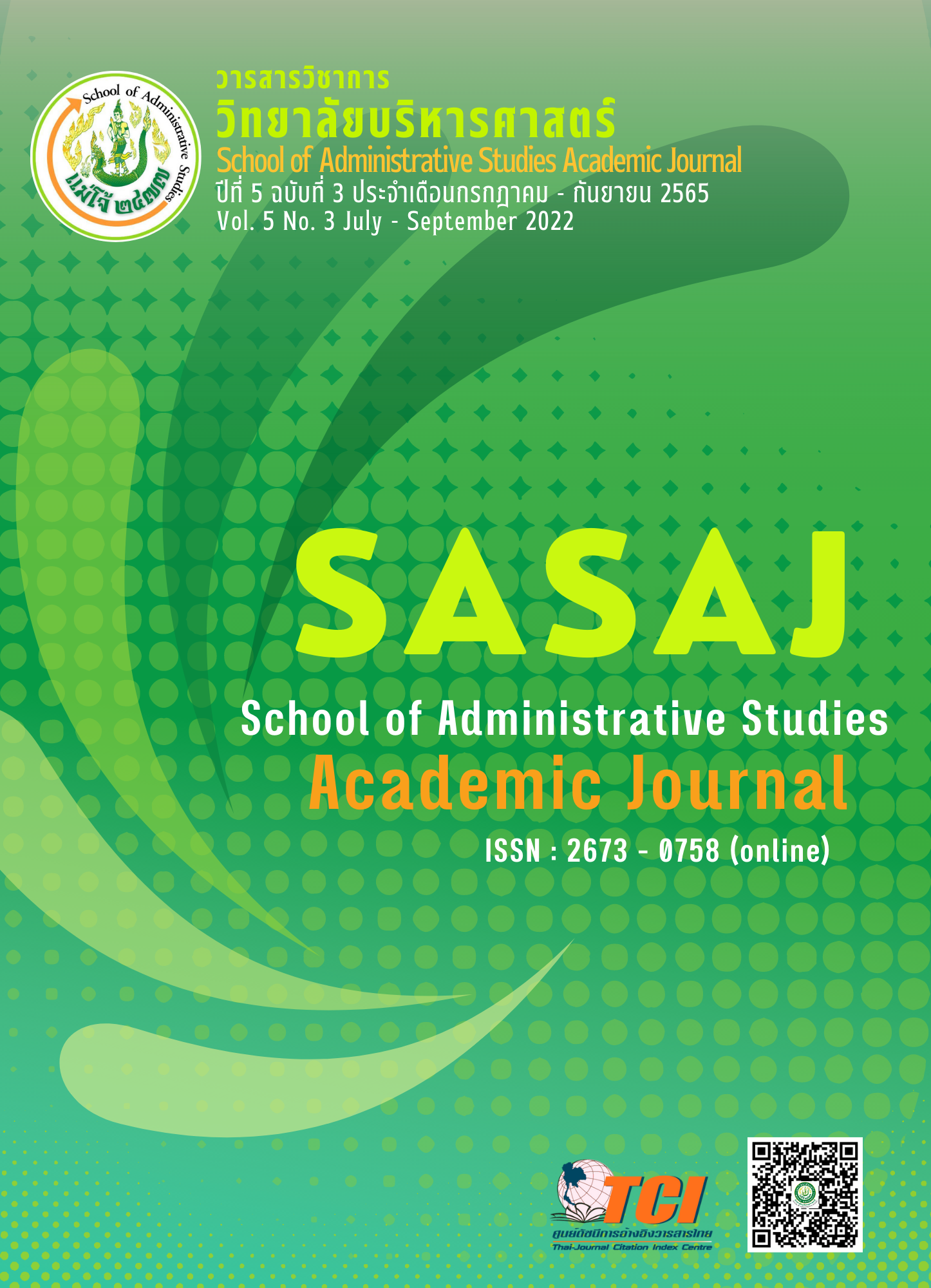The Development of The Community Financial Organizations Buddhist Master in Nakhon Ratchasima
Main Article Content
Abstract
The objectives of this research were 1) to study concepts, theories, and principles of the Community Financial Organizations’ Performance and Buddha – Dharma principles for the Organization Management, 2) to study the current situations and problems of managing the Community financial organizations in Nakhon Ratchasima, and 3) to develop the community financial organizations in Nakhon Ratchasima as a model by the use of Buddha-Dharma. This study was a qualitative research. The key informant were 25 monks/ people. The research instruments was an interview, and data analysis by descriptive analysis.
The result showed that: 1) Concepts, theories, and principles of the Community Financial Organizations’ Performance and Buddha – Dharma principles for the Organization Management were that the financial organization was the saving of the village fund’s money for relying on oneself and helping each other. The Buddha – Dharma principles for the Organization Management emphasized on the members’ way of life in the right and appropriate way. 2) It was found that the management was the main problem of managing the financial organizations in Nakhon Ratchasima. Lack of knowledge and skills in accounting including organizing financial activities and documenting systematically for use in checking the shortage of knowledgeable personnel and willingness to work full time including some that are not taken care of by the relevant agencies or received in parts that do not meet the needs. 3) The development of the community financial organizations in Nakhon Ratchasima as a model by the use of Buddha-Dharma included the investigation of benefits, and Trisikkha principle/ The Threefold Training (Sila-percept, Samadhi - meditation, Panya – wisdom). Sila was about behaving themselves honest and following the financial regulations. Samadhi was about performing the good activities continuously. Panya was about analyzing and investigating each other together reasonably.
Article Details

This work is licensed under a Creative Commons Attribution-NonCommercial-NoDerivatives 4.0 International License.
ลิขสิทธิ์
References
กมลลักษณ์ ดิษยนันท์. (2544). ศักยภาพและปัญหาในการจัดการกองทุนหมู่บ้านในจังหวัดเชียงใหม่ (วิทยานิพนธ์ปริญญามหาบัณฑิต). มหาวิทยาลัยเชียงใหม่, เชียงใหม่.
จำนงค์ สมประสงค์. (2555). การจัดตั้งและบริหารธนาคารหมู่บ้านตามแนวพระราชดำริ. กรุงเทพฯ: มูลนิธิกลุ่มเกษตรกรแห่งประเทศไทย.
ชญาณ์นันท์ ณัชภัคปฐมภพ. (2558). แนวทางการบริหารงานกองทุนหมู่บ้านและชุมชนเมืองอย่างยั่งยืน: กรณีศึกษาจังหวัดเพชรบูรณ์. วารสารการจัดการสมัยใหม่, 13(2), 93-101.
ประเวศ วะสี. (2550). เศรษฐกิจพอเพียงและประชาสังคม แนวทางพลิกฟื้นเศรษฐกิจสังคม. กรุงเทพฯ: หมอชาวบ้าน.
พระธรรมวิสุทธิกวี (พิจิตร ฐิตวณฺโณ). (2551). การบริหารจิต. กรุงเทพฯ: เซเว่น พริ้นติ้ง กรุ๊ป.
พระพรหมคุณาภรณ์ (ป.อ.ปยุตฺโต). (2545). ธรรมนูญชีวิต: พุทธจริยธรรมเพื่อชีวิตที่ดีงาม. กรุงเทพฯ: โรงพิมพ์ บริษัท สกธรรมิก จำกัด.
ยงยุทธ เจริญรัตน์. (2545). ประเมินผลการดำเนินงานกองทุนหมู่บ้านและชุมชนเมือง ศึกษาเฉพาะกรณี กองทุนชุมชนเมืองของกรุงเทพมหานคร (รายงานวิจัย). กรุงเทพฯ: สถาบันบัณฑิตพัฒนบริหารศาสตร์.
รังสรรค์ ปิติปัญญา. (2547). แนวทางการพัฒนาองค์กรการเงินชุมชนในพื้นที่จังหวัดลพบุรี (รายงานวิจัย). กรุงเทพฯ: มหาวิทยาลัยเกษตรศาสตร์.
ศิริพงษ์ ลดาวัลย์ ณ อยุธยา. (2551). หน้าที่ทางการบริหาร. เชียงใหม่: โรงพิมพ์ดาว.
สำนักงานกองทุนสนับสนุนการวิจัย. (2544, 26 มิถุนายน). THE GRAMEEN BANK ธนาคารหมู่บ้านตามแนวทางพระราชดำริที่ไทยควรศึกษา. ไทยโพสต์, น. 20.
เสรี พงศ์พิศ. (2547). ฐานคิดจากแผนแม่บทสู่วิสาหกิจชุมชน. กรุงเทพฯ: พลังปัญญา.
Adjei, J. K., Arun, T., & Hossain, F. (2009). Asset Building and Poverty Reduction in Ghana: The Case of Microfinance. Centre for Socio-economic Dynamics and Cooperation of the University of Bergamo, 33(3), 265-291. Retrieved from https://www.jstor.org/stable/41406497
Li, X., Gan, C., & Hu, B. (2011). The welfare impact of microcredit on rural households in China. Journal of Socio-Economics, 40(4), 404–411. https://doi.org/10.1016/j.socec.2011.04.012
Mago, S., & Mago, S. (2013). Asset-Building and Microfinance: An Econometric Analysis. Mediterranean Journal of Social Sciences, 4(3), 449–456. doi: 10.5901/mjss.2013.v4n3p449


